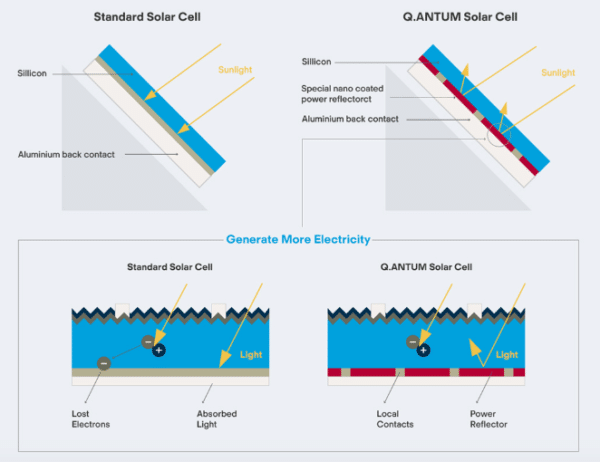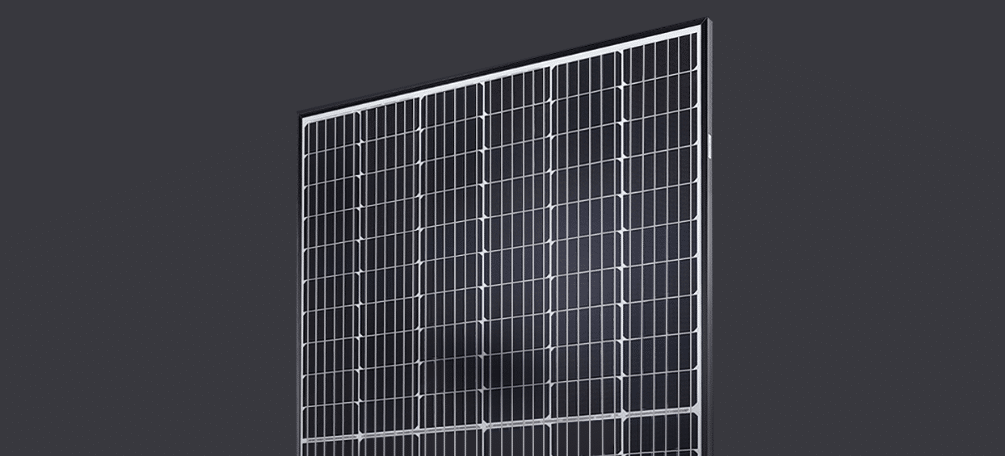In the wave of new U.S. manufacturing announcements that followed both the imposition of global tariffs under Section 201 and last fall’s tax reform, it has been hard to keep up with the technologies of the individual factories. In particular, we have known very little about the technology that would be used in the largest of these facilities, Hanwha Q Cells’ planned 1.6 GW factory in Northern Georgia.
That is, until today. Hanwha Q Cells has revealed that the new factory will make Q.PEAK DUO BLK-G6 modules, a variation on its Q.PEAK DUO BLK-G5, and says that the G6 offers 5% more output.
Like the Q.PEAK DUO BLK-G5, the new modules will feature half-cut mono cells using Q Cells’ Q.ANTUM passivated emitter rear contact (PERC) technology, and six busbars. The output of the 120-cell (60 half-cut) modules will be 330-345 watts.

Hanwha’s language in a press statement alludes to a series of “Made in America” products, but only mentioned the G6 among the range of products that will be made at its new factory, which is planned to open during Q1 of next year. It is not clear from where the facility will source the monocrystalline cells for the G6, but the factory will be opening in time for the annual reduction of tariff levels on imported cells.
Novel modules for U.S. manufacturing
Hanwha has previously emphasized the success of its half-cut mono products in the U.S. residential market, so the decision to make these products at the new factory is not entirely a surprise.
This follows on JinkoSolar’s decision to make modules using cells based on unusually sized 158.75 mm square P-type mono wafers in its Jacksonville plant. Both Hanwha and JinkoSolar’s plans involve novel cell designs, and also high-efficiency mono PERC.
It is not clear where these modules are headed. Both companies have emphasized the market for smaller-scale residential and/or commercial plants, but both also hold contracts to supply large utility-scale projects, for which they will need to either use these high-efficiency products or import modules that will be subject to Section 201 tariffs.
In addition to these, First Solar will be making its new large-format Series 6 module at its new factory under construction in Ohio. And while like other First Solar modules this product is definitely meant for the utility-scale segment, it reinforces the trend that for U.S. module manufacturing, differentiation has become the name of the game.
This content is protected by copyright and may not be reused. If you want to cooperate with us and would like to reuse some of our content, please contact: editors@pv-magazine.com.









By submitting this form you agree to pv magazine using your data for the purposes of publishing your comment.
Your personal data will only be disclosed or otherwise transmitted to third parties for the purposes of spam filtering or if this is necessary for technical maintenance of the website. Any other transfer to third parties will not take place unless this is justified on the basis of applicable data protection regulations or if pv magazine is legally obliged to do so.
You may revoke this consent at any time with effect for the future, in which case your personal data will be deleted immediately. Otherwise, your data will be deleted if pv magazine has processed your request or the purpose of data storage is fulfilled.
Further information on data privacy can be found in our Data Protection Policy.